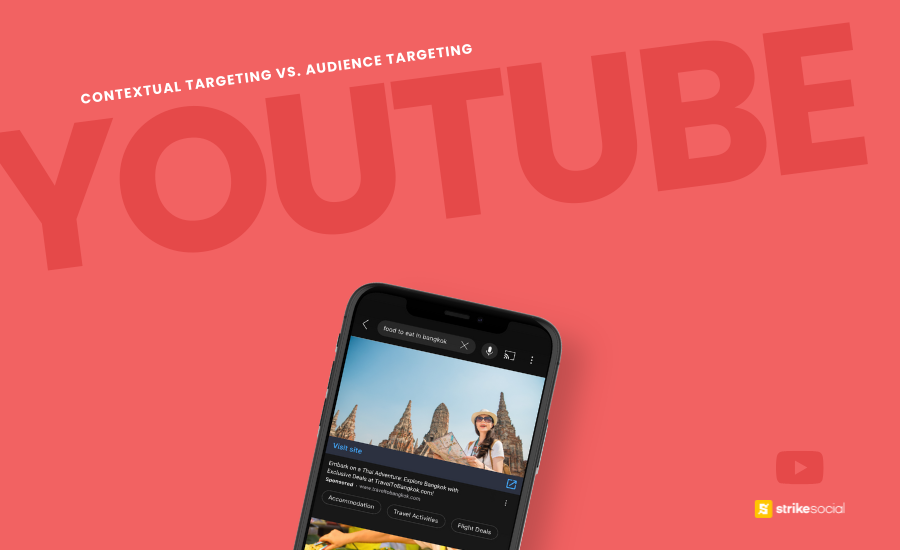Strike Overview
- Are you grappling with your video advertising strategies, having experimented with both YouTube contextual targeting and audience targeting without achieving the desired results?
- Recognizing that many YouTube users primarily seek entertainment rather than actively shopping or exploring brands and products is crucial. You must balance entertainment and the optimal targeting mix to effectively engage with the right audience.
- In this blog, we explore YouTube contextual targeting vs. audience targeting and provide insights into effectively reaching your target audience.
Jump to Section
This post was updated in December 2024 to provide you with the latest information.
Determining the Perfect Targeting Approach: YouTube Contextual Targeting vs YouTube Audience Targeting
Have you ever wondered why up to $65,000 out of every $100,000 advertising money is wasted due to mistargeted ad impressions? As it turns out, employing the best targeting strategies for YouTube ads is crucial to avoid this problem. Beyond location, interests, recent searches, devices, and more demand careful attention.
When it comes to video ads on YouTube, there are two primary targeting options: YouTube contextual targeting and audience targeting. Both avenues offer distinct advantages and have their share of disadvantages.
Let’s understand the intricacies of these two approaches, identify their similarities and differences, toward determining the perfect targeting approach for your YouTube ads.
What are the Key Differences Between Contextual Targeting and Audience Targeting in YouTube Ads?
While both methods aim to reach relevant viewers, their underlying strategies and targeting criteria differ.
Contextual targeting on YouTube focuses on the content consumed by the viewer when the ad is displayed. Advertisers place ads alongside videos, channels, or topics related to their product or service. For example, an advertiser might promote running shoes alongside fitness videos about sports and recreation.
Audience targeting, on the other hand, utilizes data about the viewer’s demographics, interests, behaviors, and past interactions with YouTube. Advertisers collect data through various means, such as browsing history, search activity, and past video interactions. They use this data to understand viewers’ preferences and characteristics, which allows them to deliver more personally relevant ads.
We have summarized here the key differences between YouTube contextual targeting and YouTube audience targeting:
| Feature | YouTube Contextual Targeting | YouTube Audience Targeting |
|---|---|---|
| Targeting Criteria | Video Content Channels Topics | Demographics Interests Behaviors Past interactions |
| Ad Delivery | Based on current content consumption | Based on viewer’s identity and characteristics |
| Relevance to Viewer | Relies on content relevance to the ad’s message | Relies on viewer’s past actions and preferences |
| Use Cases | Reaching audiences interested in a particular topic | Reaching audiences based on their unique characteristics |
Further Reading
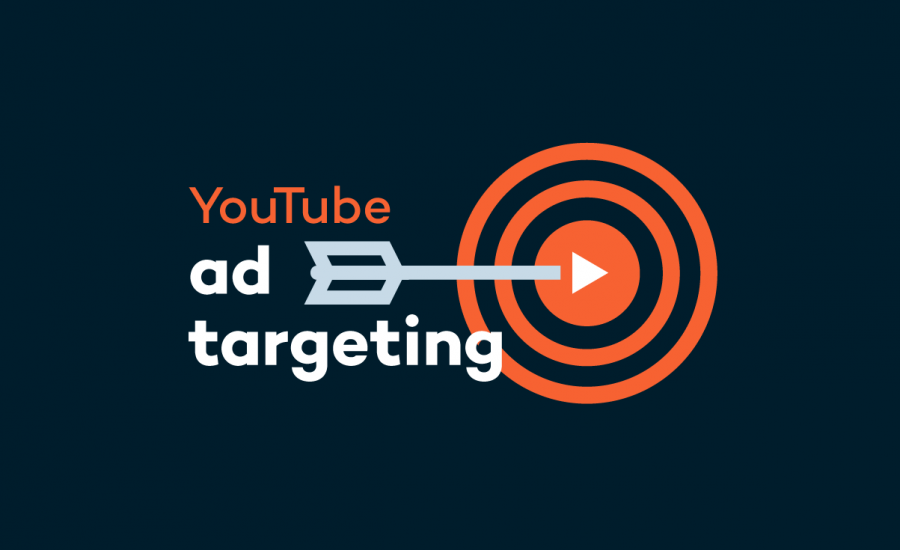
Key Components of Ad Targeting on YouTube
To optimize ad spend and achieve better results, YouTube advertisers must carefully define their target audience. Explore the various targeting options available to effectively segment your audience and enhance the performance of your YouTube ad campaigns.
Optimizing your YouTube advertising strategy involves a strategic balance between contextual targeting and audience targeting. Let’s explore the ideal scenarios for employing YouTube contextual targeting vs YouTube audience targeting:
When To Use YouTube Contextual Targeting
Broader reach
- Reaching a large audience interested in a particular topic or category.
- Example: A clothing brand showcasing its latest collection alongside fashion videos and channels.
Lower cost
- Reaching a wider audience without the expense of in-depth audience segmentation.
- Example: A fitness meal plan ad on workout tutorials and fitness enthusiast channels.
Topic relevance
- Ensuring ads are displayed alongside related content for a more seamless viewing experience.
- Example: A tech company promoting their new smartphone on tech review videos and gadget-related channels.
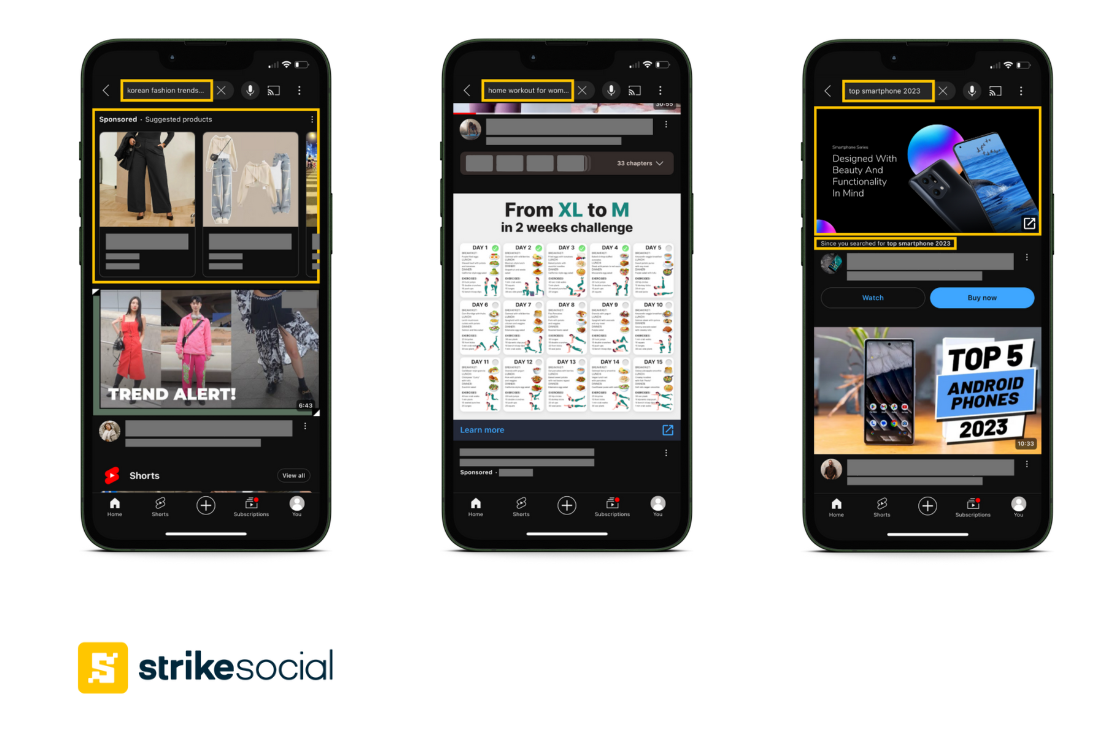
When you want to align your ad content with the videos users watch, YouTube contextual targeting shines. It’s a cost-effective way to promote your ad alongside relevant videos, enhancing the viewer’s overall experience.
When To Use YouTube Audience Targeting
Targeted reach
- Reaching specific audience segments based on their demographics, interests, and behaviors.
- Example: An online shopping app targeting women aged 18-34 with a keen interest in fashion and trends.
Personalized ads
- Delivering highly relevant ads tailored to individual preferences and past interactions.
- Example: A hotel and flight booking application targeting individuals who have previously searched for travel destinations and accommodations.
Conversion-focused
- Increasing the likelihood of desired actions, such as website visits or purchases.
- Example: A job search app targeting students and graduates aligned with their academic interests and career goals.
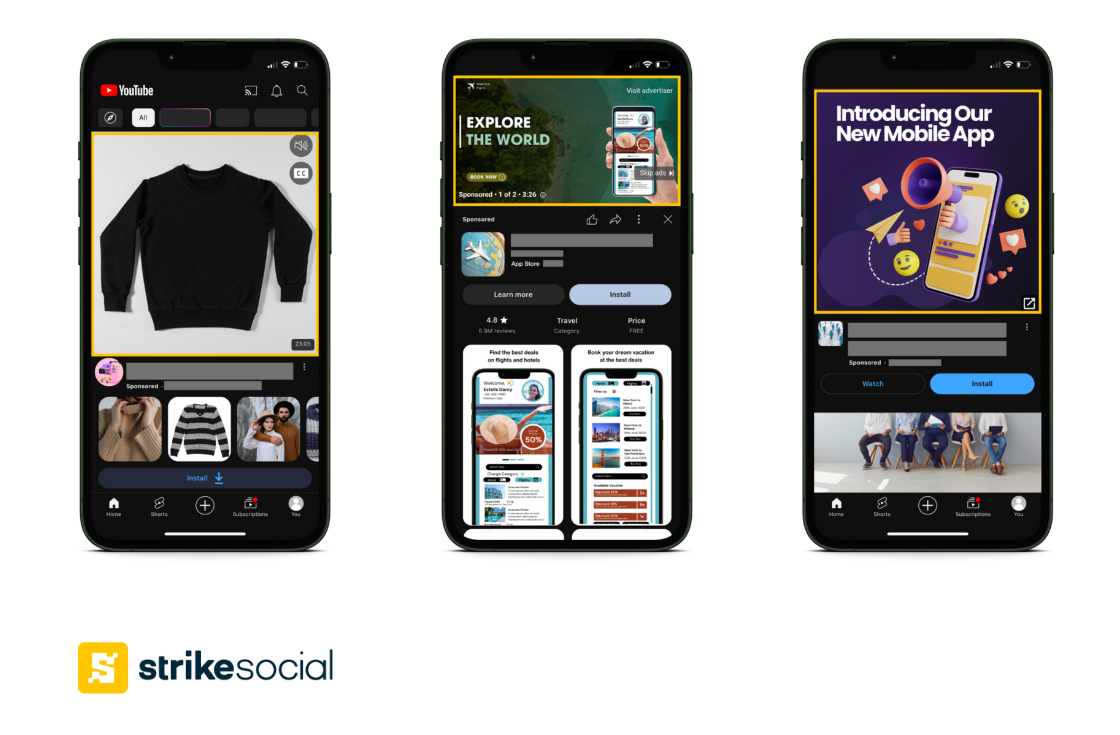
YouTube audience targeting excels when precision matters. Tailoring your ads to specific demographics, interests, and behaviors ensures a personalized viewing experience, increasing the likelihood of conversions.
The choice between YouTube contextual targeting vs YouTube audience targeting boils down to your campaign objectives and audience type. Integrating both approaches strategically can offer a well-rounded YouTube advertising strategy tailored to your brand’s goals.
Download our 2024 YouTube VVC Case Study
Discover how strategic audience targeting transformed this HVAC brand’s YouTube ad performance. By focusing on sports audiences, an unexpected but effective choice, the campaign achieved 81% video view completion rate while reducing costs by 40%.
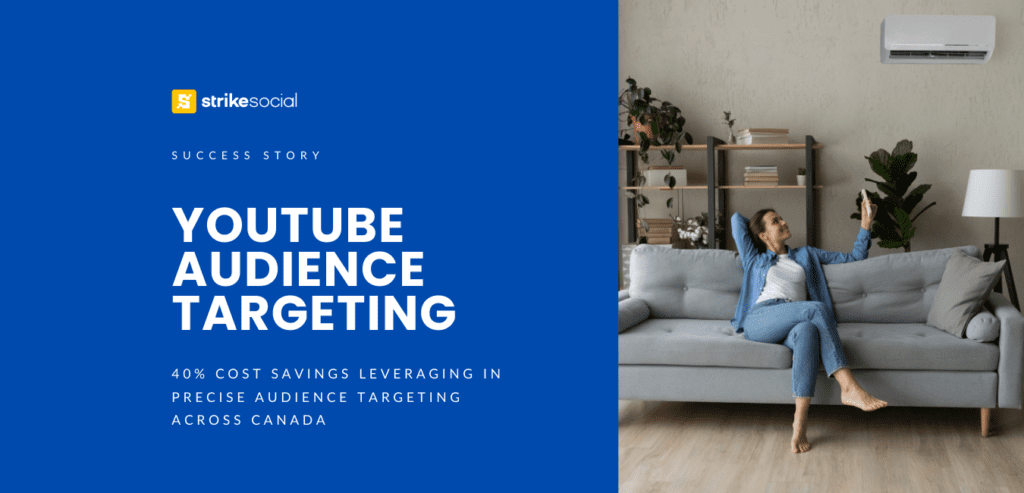
How To Choose the Right Ad Targeting For Your YouTube Ad Campaign
If you wonder, “Which targeting method is ideal for my ads?” — fret not. Here are key questions to guide you on choosing the right targeting options for your YouTube advertising campaign:
- What is the goal of your campaign?
- What is your target audience?
- What is your budget?
- How much control do you want over who sees your ads?
- How relevant do you want your ads to be to the videos they are displayed with?
You can determine the most suitable YouTube targeting approach for your campaigns based on your answers to these questions.
Allow us to illustrate this through a visual comparison:
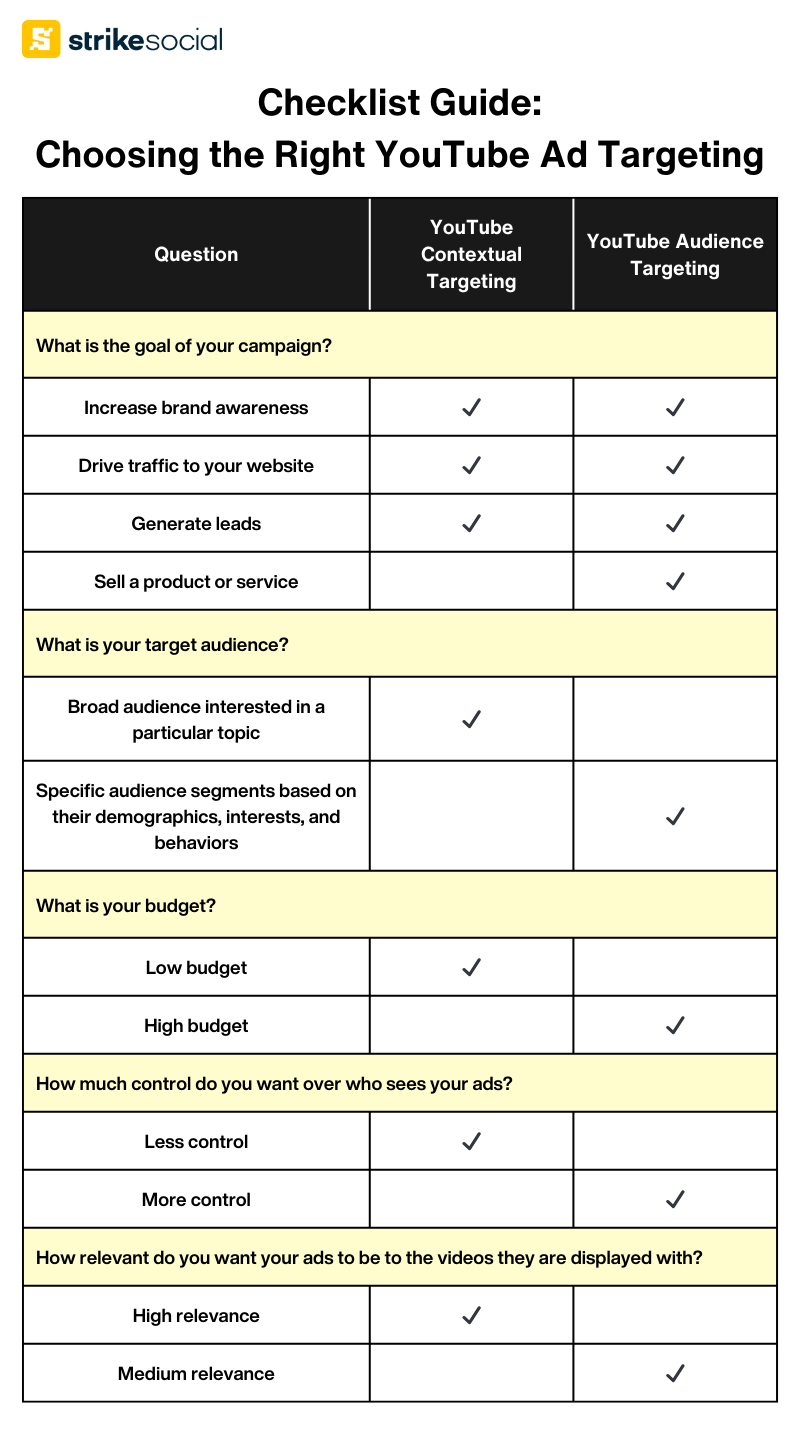
In addition to these considerations, here are some tips for refining your YouTube ad targeting strategy:
- Combine Targeting Methods: Utilize both contextual and audience targeting to broaden your reach and enhance campaign results.
- Experiment with Different Methods: Test various targeting approaches to identify what resonates best with your campaign objectives.
- Diversify Ad Formats: Explore different YouTube ad formats like YouTube Shorts, bumper ads, or in-feed ads to reach your target audience effectively.
- Track and Adjust: Regularly monitor your campaign results and adjust based on performance insights.
Choosing the Right YouTube Targeting Strategy
Analyzing the specifics of YouTube contextual targeting vs YouTube audience targeting has shed light on the pros and cons of each approach. Mistargeted ad impressions can be costly, stressing the importance of implementing the best targeting strategies for YouTube ads. Your campaign’s success hinges on considering your campaign goals, target audience, budget, control preferences, and ad relevance.
Knowing these insights now, you’re better equipped to refine your video advertising strategy. Ensuring your brand resonates with the right audience on YouTube requires a continuous cycle of testing and optimizing your approach. This iterative process sets the stage for more impactful and successful YouTube ad campaigns.


